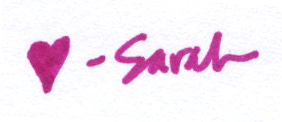This week’s video is about patching, slow stitching, and the ancient Japanese tradition of Boro. I hope you enjoy it.
Joy and Integrity
In the age of mass production and advanced technologies, most of us have no idea how anything works or how to fix it if it breaks.
This is not your fault. Or mine.
Still, as someone who makes and mends some things, I’m here to tell you there’s a joy and integrity to be found in upcycling, repairing and reusing.
And of all the ways one could learn to repair something, sewing a patch seems like one of the most do-able for many of us.
And when you patch your clothes, you’re not just mending. You’re in the process of making your mass produced clothing unique to you. So when someone says to you, “I love your patched jeans, where did you get them? You can say, “Oh, I just patch them myself.” (I actually have this conversation fairly often.)
Getting Started
One way to start patching your clothes is to allow yourself do it however you can. Let your stitching be rough and wobbly. Wing it. Have fun.
Living in the age of the machine, we often unconsciously expect machine-like perfection from things made from the human hand. Especially our own. Instead, love your imperfections. Feel into them. You’re a person using your hands. Let that be nice. Honor the effort.
This includes using your sewing machine. Yeah, it’s a machine, but you are not. It’s okay if your sewing machine efforts are also wobbly.
Practical Matters
Many people own a sewing machine but don’t really sew, and they feel a little intimidated about using it. The key first step to getting comfortable with your machine is to stop being afraid of threading it.
I promised in the video above that I would provide a link to another video on threading your machine.
I made this video a very long time ago for a blog I used to have called Make Great Stuff. You might have a different machine that threads a little differently, but I promise you, the principles are the same:
Random Tips
Here are also a few sewing tips I didn’t mention in the video. (In no particular order.)
It doesn’t really matter if you don’t have matching thread. You’re patching, not making a wedding dress. It’ll be a lot less noticeable than you think.
If you are hand sewing, resist the urge to use a very long piece of thread. You think it’s going to be more efficient because then you won’t have to re-thread your needle. It won’t! It’s hard to control a very long piece of thread and it will keep getting tangled and knotted up and that will make you feel angry and frustrated. Hold the spool of thread at your chest and pull it out to be the length of your arm. That’s enough for now.
Yes, double your thread up.
If you’ve never used interfacing, don’t worry about it.
If you don’t have scraps or worn out clothes to cut up into patches, OR you want a particular color for your patch that you don’t have, you can buy ‘fat quarters’ at any quilt store. Or even in the sewing section of Walmart. A ‘fat quarter’ is an 18” x 22” inch of quilt fabric. They are usually sold in small bundles of patterns and colors that look good together. Quilting fabric is usually 100% cotton and is also one of the easiest fabrics to sew.
Patching is nice to do in front of the TV, listening to music, or even having a glass of wine with a friend. Or especially having a glass of wine with a friend.
I show a simple way to create a knot in the video, but if you need another video about that, let me know and I’ll make a slower one. In the meantime, make a knot however you can manage.
If you wear mostly knits, you probably need to “darn” not patch. I’m trying to learn how to darn and just bought a very clear book on the subject in case you want to check it out:
That said, yes, I know your your jeans have some stretch in them, but they aren’t a “knit.” You can patch them.
Um, what else am I forgetting? Fellow sewists—any thoughts? Please share in the comments.
Final Thoughts: Interrupting Fast Fashion
Historically, patching and repairing your clothes was always a necessity because cloth was expensive, rare, and valuable. Nowadays, it’s cheaper to buy your clothes than make them, so patching can seem like a “waste of time.”
But many of us don’t even realize that fast fashion is the second biggest consumer of water and is responsible for about 10% of global carbon emissions – more than all international flights and maritime shipping combined.
Lordy, let that sink in.
But this is not a guilt trip. I’m not a purist (about anything) and I still buy new clothes sometimes. And even when I do sew from scratch, the yardage itself is still often made in a fast fashion factory somewhere overseas. There’s no escaping it on your own.
I also believe that putting the onus of fixing climate change on individual consumer choices is ridiculous and disempowering, as the only real solutions for climate change are structural.
That said, maybe you could think of patching your clothes as a small act of rebellion. A moment of solidarity with fashion factory workers around the world.
May the force be with you.
Do you sew? Do you want to? Are you afraid to sew by hand? Or use your machine? Are you still thinking, “Why bother?” Have strong opinions or feelings about fast fashion? Leave a comment, I’d love to hear:















